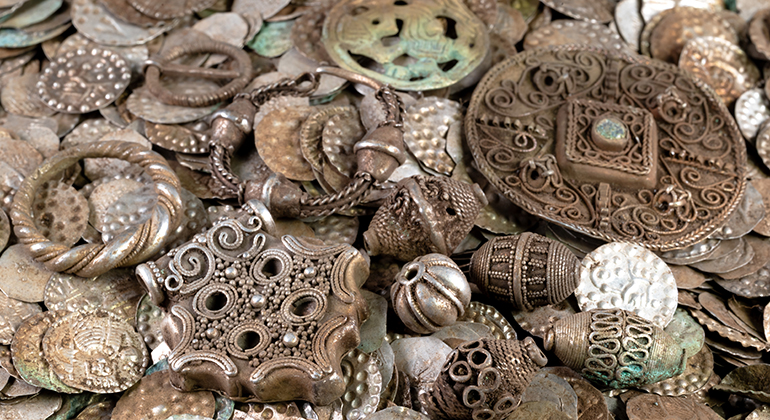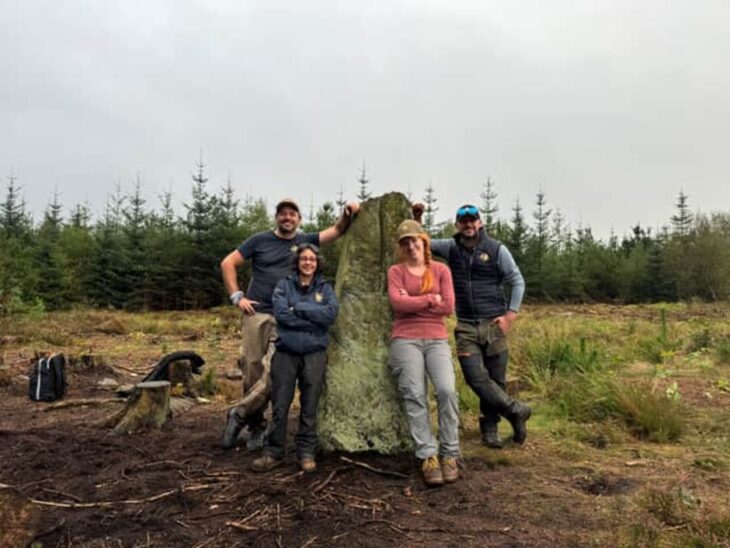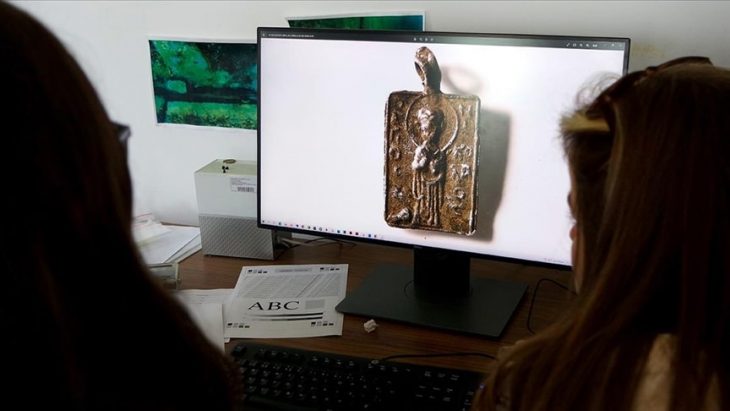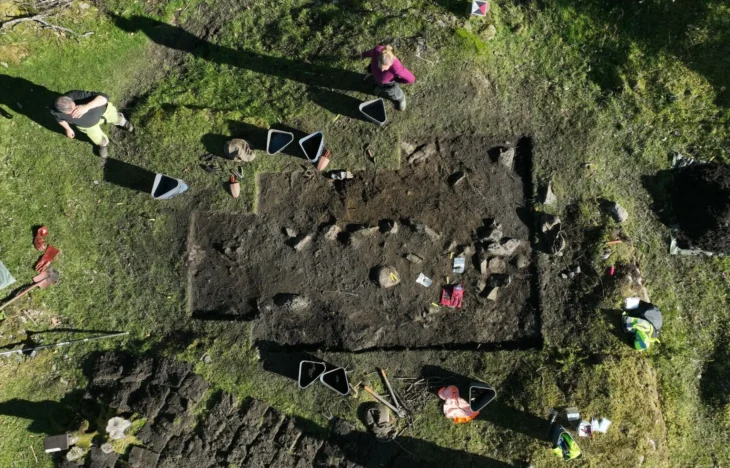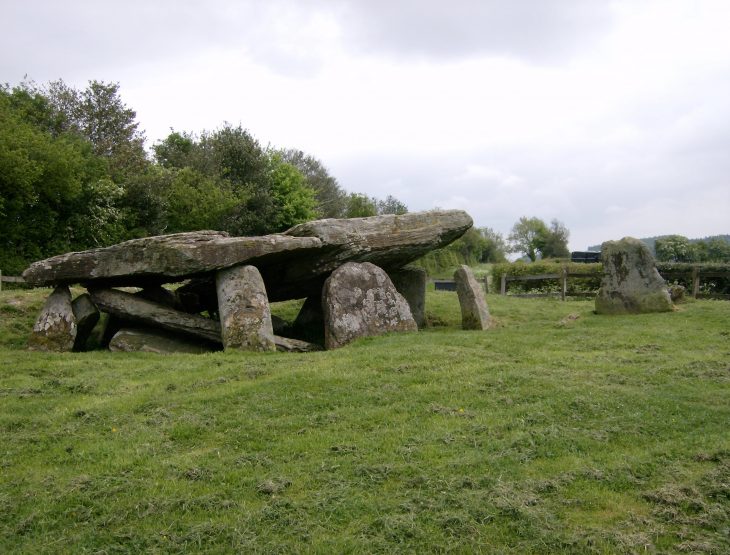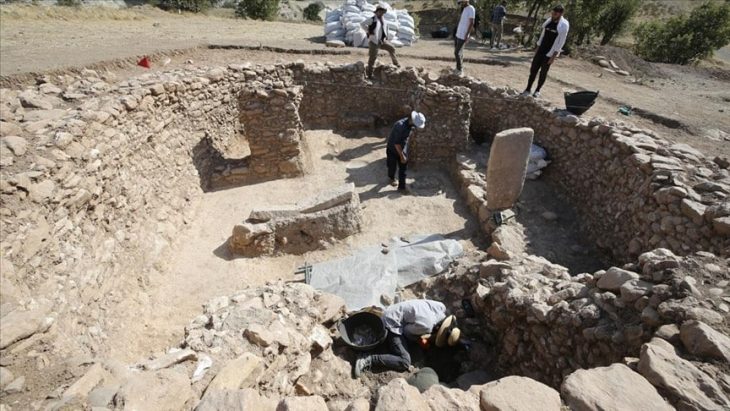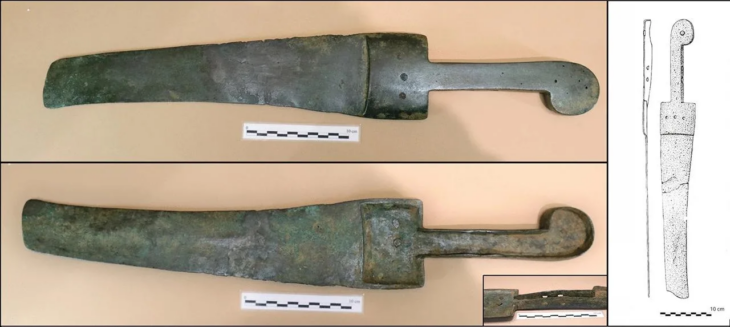In an astonishing find that could reshape our understanding of early medieval Scandinavian wealth, a private individual digging for earthworms near their summer residence in the Stockholm area discovered a vast hoard of silver coins and jewelry. The hoard, estimated to weigh about six kilograms, may contain up to 20,000 silver coins, along with silver rings, pendants, beads and other artifacts, all evidently buried together in a now-degraded copper cauldron.
Archaeologists and conservators are currently working under the supervision of the Stockholm County Administrative Board and Länsstyrelsen, based on a formal report of the find, in order to examine, conserve, and document each piece. The precise find location is being held secret until the excavation and analysis are complete, with care taken to protect the site from looting or unauthorized disturbance.
A Royal Inscription: “KANUTUS” and the Age of Knut Eriksson
Preliminary analysis has dated most of the coins to the 12th century, and many bear the inscription KANUTUS — the Latin form of “Knut” — pointing to King Knut Eriksson (ruled c. 1173–1195). Under Knut’s reign, Sweden saw a revival of minting. After a long hiatus in domestic coin production, the king supported the reestablishment of a coinage system around c. 1180, issuing coins marked KANVTVS or KANVTVS REX, likely influenced by coin typologies from the German realm.
Knut Eriksson, also known as Canute I, was a critical figure in consolidating royal authority in medieval Sweden. His reign marked a turning point in Swedish politics: the monarchy’s power was strengthened, church structures consolidated, and international ties — for example with German principalities — were fostered. The resumption of coinage under his aegis represented a symbol of sovereignty and integration with continental ecclesiastical and monetary norms.
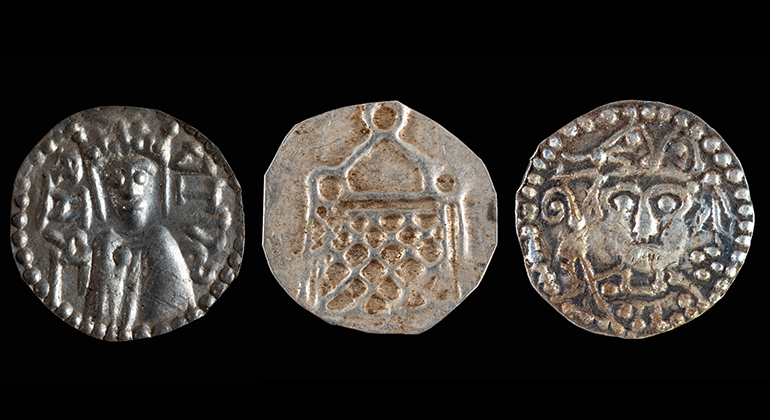
Rare “Bishop Coins” and Ecclesiastical Currency
Beyond the royal coins, the hoard includes several “bishop coins” — ecclesiastical coinage minted under episcopal authority, featuring a bishop holding a crozier (a pastoral staff) in his hand. Such coins are rare and historically illuminating: they reflect the close ties (and sometimes tensions) between church and state, and the financial autonomy of bishops as local authorities.
📣 Our WhatsApp channel is now LIVE! Stay up-to-date with the latest news and updates, just click here to follow us on WhatsApp and never miss a thing!!
These ecclesiastical coins may have circulated in cross-border contexts, especially within the ecclesiastical networks of northern Germany or the Baltic region. Their presence in a Swedish hoard suggests complex financial networks across the Baltic Sea in the later 12th century.
Why Bury a Fortune?
The manner in which the hoard was concealed — bundled into a copper cauldron with coins, jewelry, and beads — suggests a deliberate act of safekeeping. The fact that it was never retrieved hints at a sudden crisis: perhaps conflict, internal political tension, or unrest during a border campaign or regional dispute.
Interestingly, the discovery predates the founding of Stockholm (traditionally dated to 1252), showing that significant activity, wealth, and settlement must have existed in the region long before the city became formalized. Archaeologists will now search for traces of any nearby settlement, farmstead, or contemporaneous structures that may explain who buried the hoard, and under what circumstances.
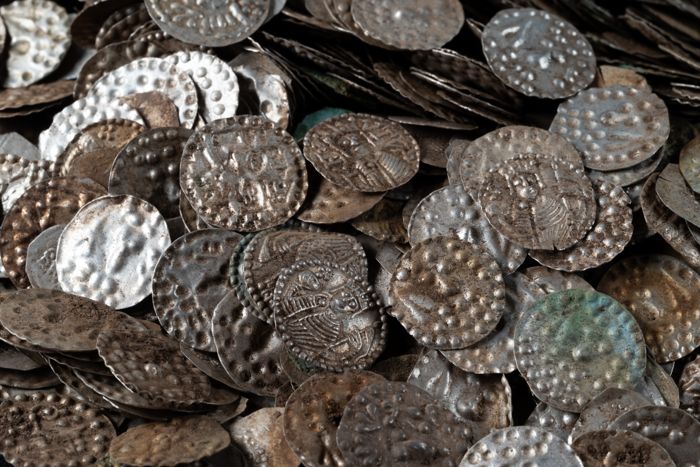
Legal Implications and Cultural Heritage
Under Sweden’s Cultural Environment Act (“kulturmiljölagen”), any discovery of precious-metal hoards or ancient deposits must be reported to the state. The treasure is now under consideration by the Riksantikvarieämbetet (National Heritage Board), which will decide whether the state should offer to redeem (liquídate) the find from its discoverer — in effect providing compensation in return for keeping it in the public domain.
The finder is commended for following the legal procedure. As Sofia Andersson, antiquarian at the Stockholm County board, notes: “According to the Cultural Environment Act, the person who finds a silver hoard or deposit is obliged to offer it for acquisition by the state.”
If the state redeems the hoard, it may end up in a national museum, where scholars and the public alike can study and appreciate this singular window into medieval Scandinavian society.
A Landmark in Swedish Archaeology
This discovery ranks among the largest medieval silver hoards ever unearthed in Sweden — not only in weight but also in volume and numismatic rarity. The mix of royal and ecclesiastical coinage makes it especially valuable for understanding economic, political, and religious networks of the 12th century.
As the excavation proceeds, each coin, ring, pendant or bead may shed new light on the trade routes, political alliances, local elites, and religious institutions of a medieval world that is still, in many ways, mysterious. Keep watching this space — further analyses, catalogues, and perhaps even digital exhibits are sure to follow.
Cover Image Credit: Länsstyrelsen Stockholm

